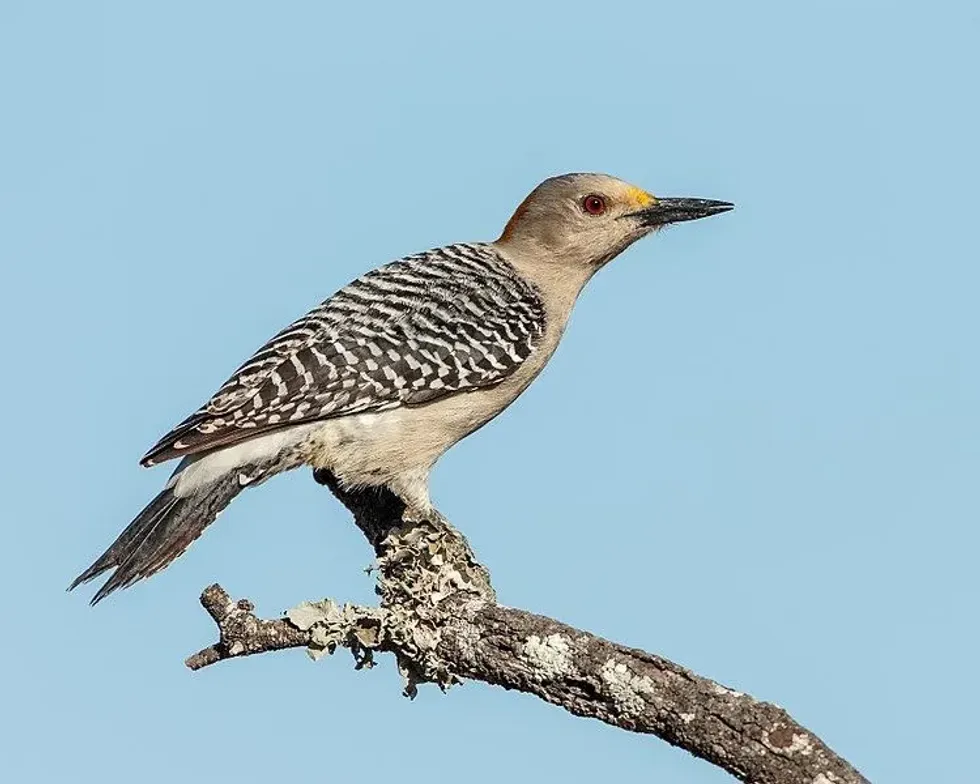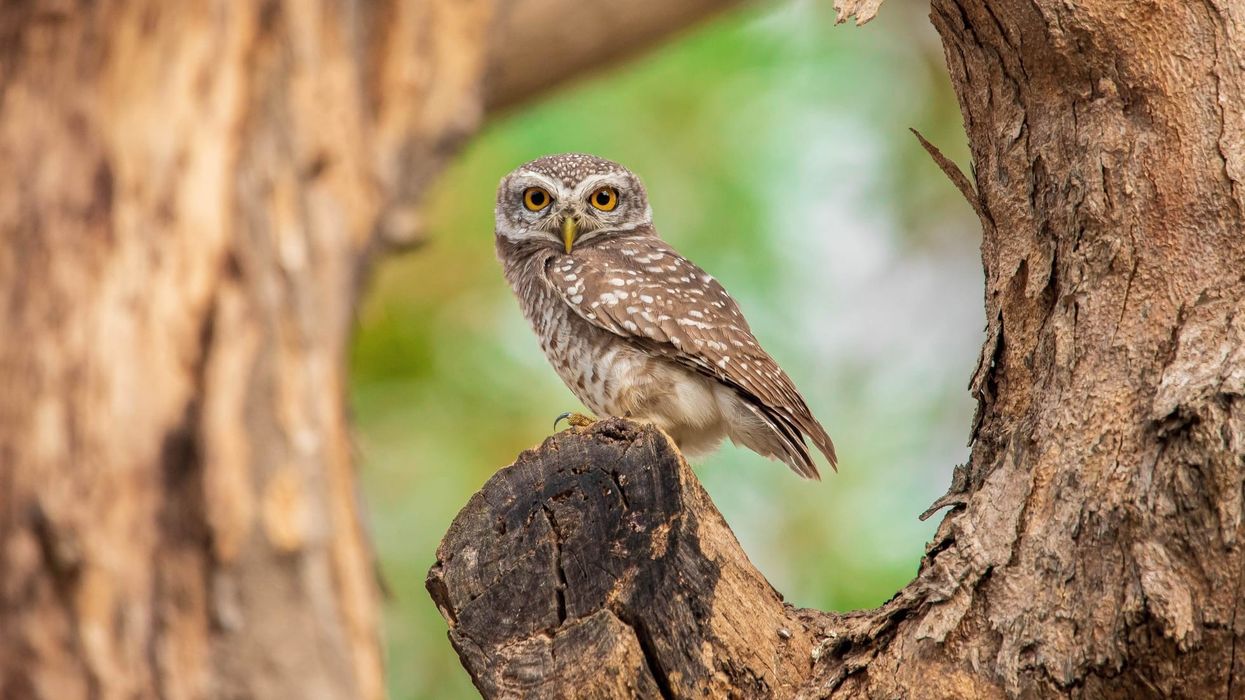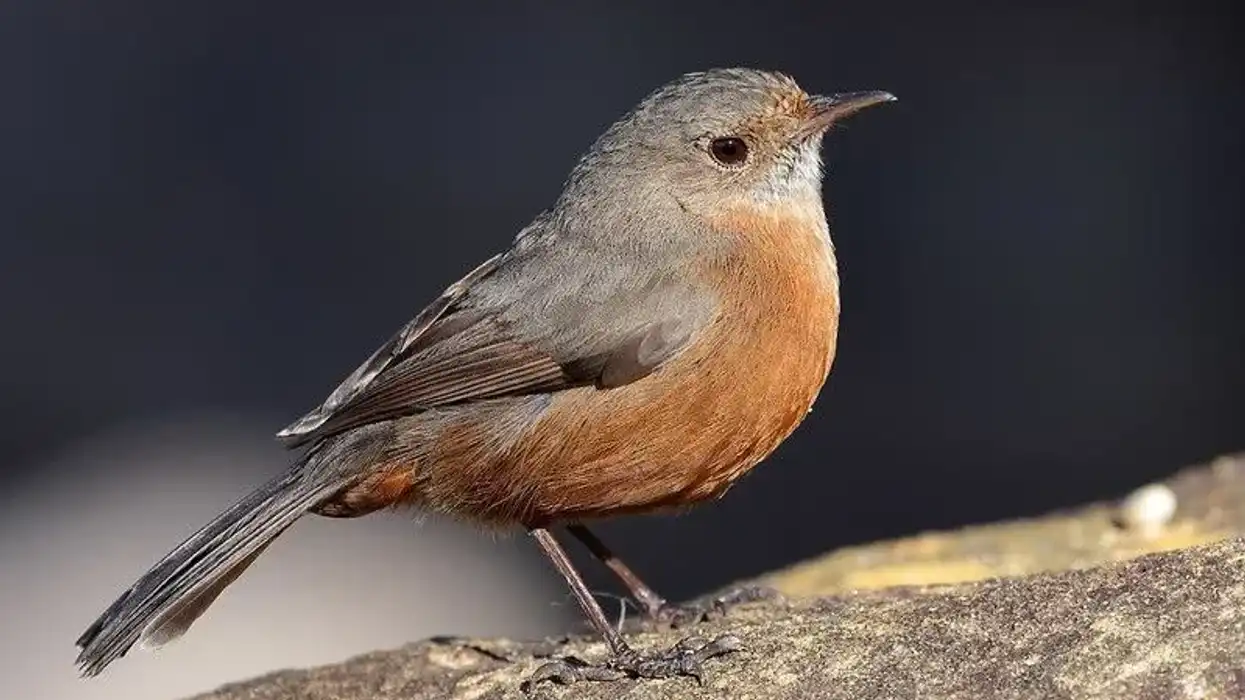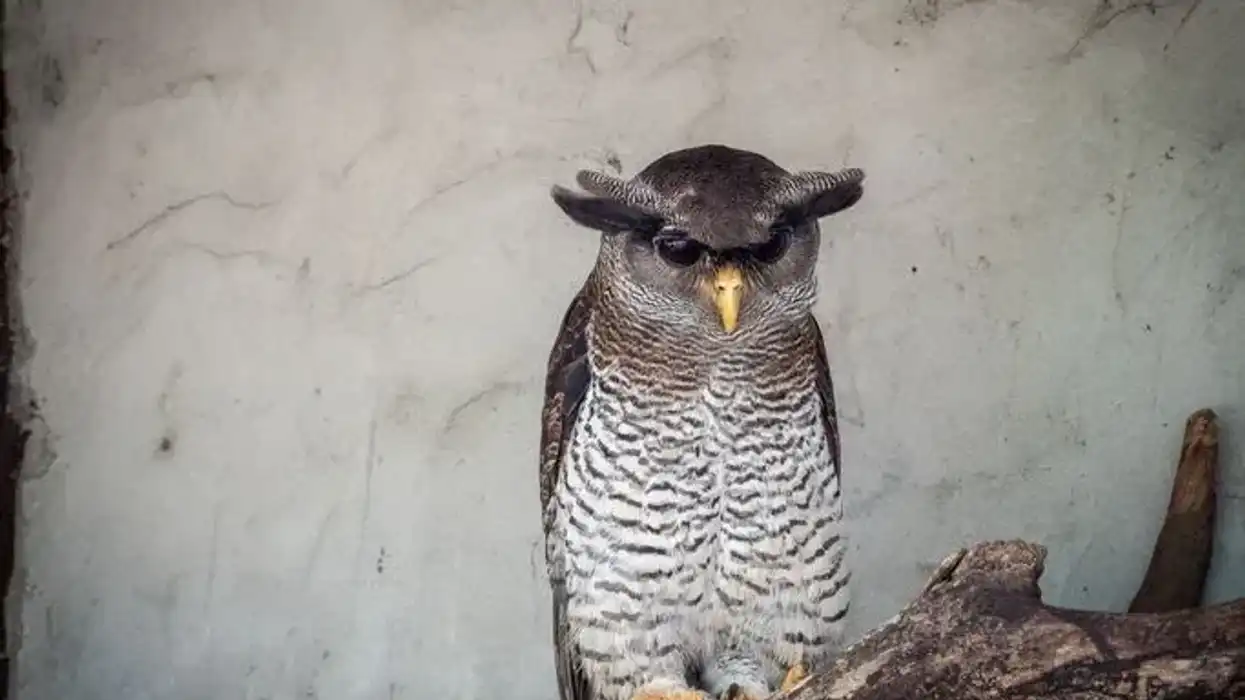The golden-fronted woodpecker (Melanerpes aurifrons) is a North American bird of the family Picidae. These birds of North America are distributed throughout Mexico, Guatemala, Belize, Honduras, El Salvador, and northern Nicaragua, along with Texas and Oklahoma in Central America.
Primarily found in scrublands, brushlands, and open woodlands around rivers or streams, these woodpeckers have four subspecies that differ in shape, the color of the nasal tufts, nape, and belly, and the amount of barring (striped feathers) on the tail.
Appearance-wise, these colorful birds of North America are quite similar to other woodpecker species such as the red-bellied woodpecker (Melanerpes corolinus), the Hoffman's woodpecker (Melanerpes hoffmannii), and the Gila woodpecker (Melanerpes uropygialis).
The golden-fronted ones are medium to large in size, have black and white barred back feathers, red or yellow nasal tufts, a white rump, an orange or yellow nape, and a characteristic red cap on the male birds.
Read on for more fun and interesting facts about these unique North American birds! If you like what you read, do check out facts about the white-headed woodpecker and lineated woodpecker.
Golden-Fronted Woodpecker Interesting Facts
What type of animal is a golden-fronted woodpecker?
The golden-fronted woodpecker (Melanerpes aurifrons) is a North American bird species closely related to the red-bellied woodpeckers.
What class of animal does a golden-fronted woodpecker belong to?
Golden-fronted woodpeckers belong to class Aves which includes all birds. Their scientific name is Melanerpes aurifrons.
How many golden-fronted woodpeckers are there in the world?
The exact population size of the golden-fronted woodpeckers of North America is not known. However, the International Union for Conservation of Nature (IUCN) reports that this bird species has a stable global population.
Where does a golden-fronted woodpecker live?
The habitat of the golden-fronted woodpecker birds includes open woodlands along rivers or streams, semi-arid to arid brushlands, arid scrublands, and savannahs with juniper and oak trees.
The distribution range of the golden-fronted woodpecker (Melanerpes aurifrons) spans across Central America and Mexico. Within this range are southwestern Oklahoma, central Texas, eastern Mexico, as well as northern Nicaragua and Honduras to the far south. The bird is most common in Texas and Oklahoma.
What is a golden-fronted woodpecker's habitat?
Within its habitat range, these birds are found in open woodlands abundant in oak, juniper, cypress, willow, and cottonwood trees. The species can be found at elevations of up to 8,202 ft (2500 m) above sea level.
The nesting behavior of this woodpecker is quite similar to that of the Red-bellied woodpecker; both prefer oak, pecan, and mesquite but may also occasionally nest atop telephone poles, fence posts, or in bird boxes.
Who do golden-fronted woodpeckers live with?
These woodpeckers are solitary nesters and do not usually nest near members of their own kind. Breeding pairs are formed during the mating season, during which there is an increase in aggressive behavior towards any intruder.
The golden-fronted woodpecker range meets with their red-bellied relatives in Texas and Oklahoma, where the two species actively defend their respective territories and may also interbreed.
How long does a golden-fronted woodpecker live?
The maximum lifespan of the golden-fronted woodpecker species is known to be five years and eight months.
How do they reproduce?
The breeding season of the golden-fronted woodpecker varies with the geographical location but typically occurs between January and June. These birds are monogamous and stick to one mating partner throughout the breeding season, during which each pair may raise about two or three broods.
After mating, a golden-fronted woodpecker female lays about four to seven eggs, taking a day to recover between each laying. The eggs are incubated for about 12-14 days.
The young birds become independent and leave the nest after about 30 days.
When it comes to looking after the young, both the male and the female birds invest equally in parental care; the female keeps the egg and hatchlings warm during the day, and the male does so during the night.
When one parent is taking care of the young in the nest, the other goes out searching for food for the nestlings.
What is their conservation status?
According to the International Union for Conservation of Nature (IUCN) Red List of Threatened Species, the golden-fronted woodpecker birds are listed as Least Concern.
Golden-Fronted Woodpecker Fun Facts
What do golden-fronted woodpeckers look like?
The golden-fronted woodpeckers are medium-sized species of birds with characteristic black and white stripes on the wing feathers. The nasal tufts are either yellow or red with a gray head, breast, and flanks.
The gray coloration continues towards the tail, but the tail feathers are black and bespeckled with white patches. The birds have a white rump with a yellowish abdominal area.
The male woodpeckers of Mexico and Central America have a typical golden-orange nape and solid red crown. In females, the nape is yellowish while the crown is a shade of gray.
Both the male and the female birds have grayish-green feet and legs. The bill of the male is longer than that of the female. The juvenile birds have brown eyes, which change to dark red in adults.
How cute are they?
The golden-fronted woodpeckers are pretty cute due to their adorable size and colorful plumage.
How do they communicate?
The golden-fronted woodpecker is a very vocal bird species having distinct calls for various situations. Both the male and the female members are known to vocalize. The calls are mostly heard during sunset and when the sun is at its peak during the day.
Vocalizations may include distress or warning calls, agonistic calls, and calls for greeting mates. While distress calls are common when attacked by predators, warning calls are given out when intruders trespass the birds' territorial range.
A week-old hatchling makes begging calls that turn into wheezes by the fledgling stage. These woodpeckers are also known to communicate non-verbally. For instance, drumming indicates marking territorial range, and tapping is a typical gesture during mating.
How big is a golden-fronted woodpecker?
The average length of the golden-fronted woodpecker species can range between 0.8-1 in (20.3-24.3 mm) from the edge of the long beak to the tip of the toes. The wingspan can range between 4.8-5.3 in (122-135 mm).
They are about 10 times smaller than the red-bellied woodpecker species, which has an average length range of 9-10.5 in (229-267 mm). The Gila woodpecker is much larger at 8-10 in (20-25 cm).
How fast can a golden-fronted woodpecker fly?
The exact flight speed of this woodpecker species is not available. However, these birds are known to have rapid wing movements during flight with the ability to fly away immediately when frightened.
How much does a golden-fronted woodpecker weigh?
The weight of these woodpeckers ranges between 2.3-3.5 oz (66-99 g). The males are heavier than the females.
What are the male and female names of the species?
Male and female woodpeckers do not have any distinct names.
What would you call a baby golden-fronted woodpecker?
Like all other birds, a baby woodpecker would be called a chick, hatchling, or fledgling.
What do they eat?
The golden-fronted woodpeckers are omnivores. Plant-based foods include fruits, acorns, corn, berries, and nuts. The animal diet mostly includes insects such as moths, grasshoppers, cicadas, praying mantises, ants, beetles, and spiders.
Are they dangerous?
These woodpeckers are not known to pose any danger to humans, except that they may damage property to create nesting and foraging cavities. Besides, these birds can be quite aggressive towards intruders, especially during the mating season.
Would they make a good pet?
Woodpeckers, in general, do not make good pets for the sheer reason that they are wild birds and are nuisance pests causing damage to wooden structures.
Did you know...
The golden-fronted woodpecker can be distinguished from their red-bellied relatives by the color of the nasal tufts and the nape; while the former only has a red crown, the latter's crown, nape, and nasal tufts are all a shade of red.
These woodpeckers are known to provide nest cavities to other bird species such as house sparrows, eastern bluebirds, and tityras that compete with the woodpeckers for home territory.
Since the golden-fronted woodpeckers are non-migratory birds, they do not have any special status in the US Migratory Bird Treaty Act. They also do not have any special status in the State of Michigan List, the US Federal List, and CITES.
Costs and benefits of woodpeckers
All woodpecker species are a treat to bird-watchers, besides providing educational and research benefits and contributing to ecotourism. They especially love watching endangered and rare woodpeckers like the red-cockaded woodpecker. The only known negative impact of these birds is that they cause significant damage to wooden structures due to their habit of pecking to create cavities.
What does it mean if a woodpecker pecks your house?
Woodpeckers peck houses for either of the following reasons:
The bird wants to excavate a hole for nesting.
The bird is looking for insects or larvae residing in the wood.
The bird might be storing food into the holes they peck.
The sound created while pecking helps the bird to find a mate or proclaim territory.
Here at Kidadl, we have carefully created lots of interesting family-friendly animal facts for everyone to discover! Learn more about some other birds from our satin bowerbird facts and metallic starling facts pages.
You can even occupy yourself at home by coloring in one of our free printable golden-fronted woodpecker coloring pages.










